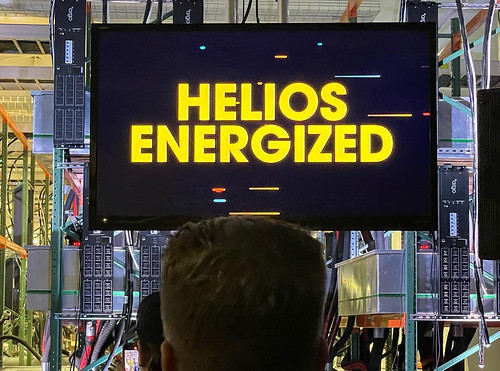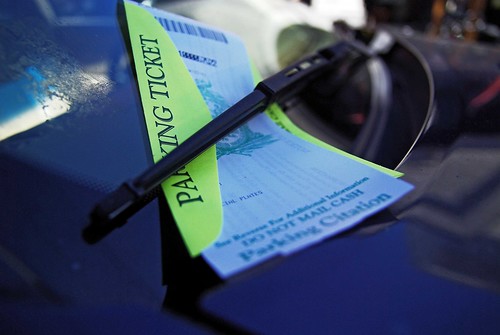
Need an espresso machine? Twitter is auctioning off a whole load in January. Plus lots of chairs. And other things. CC-licensed photo by cahadikincahadikin on Flickr.
You can sign up to receive each day’s Start Up post by email. You’ll need to click a confirmation link, so no spam.
There’s a new post at the Social Warming Substack at about 0845 UK time. Free signup.
This is the last Overspill of 2022. Thanks for reading through the year!
Back in three weeks, on January 9.
A selection of 10 links for you. Minimal mention of jets. I’m @charlesarthur on Twitter. Observations and links welcome.
Exclusive: ChatGPT owner OpenAI projects $1 billion in revenue by 2024 – sources • Reuters
Jeffrey Dastin, Krystal Hu and Paresh Dave:
»
ChatGPT, the new chatbot that is the talk of Silicon Valley, can spit out haikus, crack jokes in Italian and may soon be the scourge of teachers everywhere facing fake essays generated by the AI-powered technology.
But a question it can’t fully answer is this: how will OpenAI make money?
The research organization, co-founded by Elon Musk and investor Sam Altman and backed by $1bn in funding from Microsoft Corp (MSFT.O), is expecting its business to surge.
Three sources briefed on OpenAI’s recent pitch to investors said the organization expects $200m in revenue next year and $1bn by 2024.
The forecast, first reported by Reuters, represents how some in Silicon Valley are betting the underlying technology will go far beyond splashy and sometimes flawed public demos.
OpenAI was most recently valued at $20 billion in a secondary share sale, one of the sources said. The startup has already inspired rivals and companies building applications atop its generative AI software, which includes the image maker DALL-E 2. OpenAI charges developers licensing its technology about a penny or a little more to generate 20,000 words of text, and about 2 cents to create an image from a written prompt, according to its website.
…Among those building applications atop OpenAI has been Jasper, which says it has drawn 80,000 marketers to draft ads, emails, blogs or other content with its software. The fast-growing company is expected to double its revenue to about $80 million this year, a source familiar with the matter told Reuters. Its chief executive did not comment on the figure.
Gil Elbaz, co-founder of TenOneTen Ventures, said marketing represented one of the clearest businesses for today’s chatbots. CarMax, for instance, has used OpenAI through Microsoft’s cloud to create thousands of customer review summaries for used cars that it is marketing, a case study on Microsoft’s website shows.
«
As expected: churning out market splodge is going to be big business.
unique link to this extract
Riffusion
Seth Forsgren and Hayk Martiros:
»
You’ve heard of Stable Diffusion, the open-source AI model that generates images from text?
Well, we fine-tuned the model to generate images of spectrograms. The magic is that this spectrogram can then be converted to an audio clip:
Really? Yup.
This is the v1.5 stable diffusion model with no modifications, just fine-tuned on images of spectrograms paired with text. Audio processing happens downstream of the model. It can generate infinite variations of a prompt by varying the seed. All the same web UIs and techniques like img2img, inpainting, negative prompts, and interpolation work out of the box.
An audio spectrogram is a visual way to represent the frequency content of a sound clip. The x-axis represents time, and the y-axis represents frequency. The color of each pixel gives the amplitude of the audio at the frequency and time given by its row and column.
The spectogram can be computed from audio using the Short-time Fourier transform (STFT), which approximates the audio as a combination of sine waves of varying amplitudes and phases.
The STFT is invertible, so the original audio can be reconstructed from a spectrogram.
«
Clever. The most impressive part is where they do transitions between sets of sounds: from a typewriter to a sort of West African jazz, from church bells to electronic beats (the latter in particular). Those feel like something artists would want to use.
unique link to this extract
“Impossible” to track: China gives up on COVID case count amid explosive outbreak • Ars Technica
Beth Mole:
»
Amid what appears to be an explosive outbreak of COVID-19, China on Wednesday said it would no longer report asymptomatic cases because they’ve become “impossible” to track after an end to mandatory testing.
The now-voluntary testing policy is part of an abrupt pivot away from the country’s strict zero-COVID policy that drew widespread protests in recent weeks.
After years of keeping SARS-CoV-2 outbreaks largely at bay with various restrictions, mandatory isolations, quarantines, lockdowns, and extensive testing, China last week significantly eased its unpopular policy. The State Council announced on December 7 that residents would no longer be required to undergo frequent PCR tests for COVID-19. It also dropped the requirement to use digital health passes—personal QR codes that tracked an individual’s movements and COVID-19 test results—for access to buildings and public transportation. And for the first time during the pandemic, the government also allowed people with mild or asymptomatic infections to isolate at home rather than in centralized facilities, which residents often criticized for being unsanitary and overcrowded.
…Without centralized testing, people in China are now relying on at-home rapid tests for the first time during the pandemic. But there is no centralized way to report results. The only case numbers reported now are from people with symptoms who have confirmed cases after being tested in government facilities.
«
Three years on, and now the epidemic is really going to let rip.
unique link to this extract
Cory Doctorow wants you to know what computers can and can’t do • The New Yorker
Christopher Byrd talks to Cory Doctorow, who for decades now has been writing science fiction and also warning us about the way in which our potentials are being blocked:
»
Byrd: In “Attack Surface,” you write, “Indifference is a lot harder to correct than simple ignorance.” I wonder if cyberpunk can do anything to correct that indifference.
Doctorow: Think of it being like “Silent Spring,” right? Before DDT made a bunch of animals extinct, “Silent Spring” convinced people to take action. There’s a problem when you have threats on your horizon where the cause and effect are separated by a lot of time and space. The natural point at which denial gives way to concern is past the point of no return. So what you want to do is shift the moment of peak denial further back so that you’ve got more runway to do something about it. You see it very explicitly now with climate fiction.
What that narrative can do is shift the point of peak indifference. But, just as importantly, it can keep denialism from sliding into nihilism. What you have to show people is not just how bad it will be if they don’t take action but how much room there is to take action to make things better. And it’s a very hard balance because the better job you do of demonstrating the vast, frightening challenge ahead of us and the consequences for inaction, the harder it is to convince people that some action could make a difference.
I think the best fiction does strike that balance. I mean, not to toot my own horn, I think that’s the thing that people like about “Little Brother.” It is a story that, for a certain kind of reader, both scares the shit out of them about how bad things can be and inspires them about how much we can do to make them better. This will all be so great if we don’t screw it up.
«
The supply chain that keeps tech flowing to Russia • Reuters
Steve Stecklow, David Gauthier-Villars and Maurice Tamman:
»
In March this year, a new firm appeared in Turkey’s corporate registry. Azu International Ltd Sti described itself as a wholesale trader of IT products, and a week later began shipping US computer parts to Russia.
Business was brisk, Russian customs records show. The United States and the EU had recently restricted sales of sensitive technology to Russia because of its Feb. 24 invasion of Ukraine, and many Western tech companies had suspended all dealings with Moscow.
Co-founded by Gokturk Agvaz, a Turkish businessman, Azu International stepped in to help fill the supply gap. Over the next seven months, the company exported at least $20m worth of components to Russia, including chips made by US manufacturers, according to Russian customs records.
The LinkedIn profile of Gokturk Agvaz, Azu International’s co-founder. Agvaz recently sold his stake.
Azu International’s rapidly growing business didn’t come from a standing start, Reuters reporting shows: Agvaz manages a wholesaler of IT products in Germany called Smart Impex GmbH. Before the invasion, Russian custom records show that the German company shipped American and other products to a Moscow customer that recently has imported goods from Azu International.Reached at his office near Cologne in October, Agvaz told Reuters that Smart Impex stopped exporting to Russia to comply with EU trade restrictions but sells to Turkey, a non-EU country that doesn’t enforce most of the West’s sanctions against Moscow. “We cannot export to Russia, we cannot sell to Russia, and that’s why we just sell to Turkey,” he said. Asked about Azu International’s sales to Russia, he replied, “This is a business secret of ours.”
«
That Turkey diversion is quite the loophole.
unique link to this extract
UN to send displaced Ukrainians USDC to convert into local currencies • Fortune
Marco Quiroz-Gutierrez:
»
For displaced people around the world, carrying cash is risky because it can be lost or stolen.
To avoid this, while also distributing aid to internally displaced persons from Ukraine and those affected by Russia’s invasion, UNHCR, the UN Refugee Agency, is turning to crypto.
Through a new blockchain-based aid program, UNHCR will transfer USDC, a stablecoin pegged to the U.S. dollar, to eligible recipients’ Vibrant digital wallets, which run on the Stellar blockchain. The aid recipients can then receive the funds in dollars, euros, or local currency at a MoneyGram location, of which there are 4,500 in Ukraine, according to a statement.
Holding crypto funds on a cell phone allows for traveling across borders or over long distances without having to worry about converting cash to other cash. The funds will be distributed to those most impacted by the war to help cover things like rent, food, medical care, and heating during the winter.
“UNHCR has been collaborating for years with the tech sector, which has played a crucial role in helping us to innovate to deliver assistance faster, as speed is of the essence in humanitarian action,” UNHCR Representative to Ukraine Karolina Lindholm Billing said in the statement.
Despite a rough couple of months for crypto, including last month’s collapse of FTX and the charges filed against former CEO Sam Bankman-Fried, the UN’s aid program illustrates a real-life use case for cryptocurrencies. Months after Russia invaded Ukraine, crypto has played an outsized role in directing funds to refugees and the Ukrainian government.
«
At last! All it took was the first war in Europe for nearly 80 years, 12 years after bitcoin was introduced. Really, though, they’re digital dollars. Circle promises that “every digital dollar of USDC can always be exchanged 1:1 for cash”.
Now, don’t lose your smartphone, or get waylaid by people who suspect you might have some USDC stored on it. But yes, finally a good use.
unique link to this extract
‘We’re robbing f*cking idiots’: Twitter influencers ‘bragged and laughed’ while pumping and dumping stocks, SEC says • Vice
Maxwell Strachan:
»
A collection of obnoxious but nevertheless perplexingly influential morons have been charged with brazenly pumping stocks via Discord, Twitter, and podcasts and then dumping their shares without disclosing that they were doing so, generating $100 million in profits by illegally throwing their own followers—over a million altogether—under the bus and running them over, according to the Securities and Exchange Commission.
They also “bragged and laughed about making profits at the expense of their followers” in private chats and “surreptitiously recorded conversations” (whoops), according to the SEC’s complaint.
Seven of the people charged are Perry Matlock (@PJ_Matlock), Edward Constantin (@MrZackMorris), Thomas Cooperman (@ohheytommy), Gary Deel (@notoriousalerts), Mitchell Hennessey (@Hugh_Henne), Stefan Hrvatin (@LadeBackk), John Rybarcyzk (@Ultra_Calls). An eighth, Daniel Knight (@DipDeity), co-hosted the stock market podcast “Pennies: Going in Raw,” where he pushed these people as “expert traders,” “provided them with a forum for their manipulative statements,” and “regularly generated profits from the manipulation,” per the SEC.
Together, the group had about 1.5 million Twitter followers, to whom they “allegedly disseminated false and misleading information about the securities that they pumped and dumped as part of the charged scheme.”
«
Brazenly pumping stocks? The fools. They should have brazenly pumped crypto coins.
unique link to this extract
The Twitter files are a missed opportunity • The Atlantic
Renée DiResta:
»
Journalists and academic researchers shouldn’t have to base their evaluations solely on anecdotes. Twitter could easily provide systematic information about its practices. In her Twitter Files thread about shadow banning, Weiss shared screenshots, provided by Ella Irwin, the company’s new head of trust and safety, of a moderation interface that allows employees to tag specific accounts in ways—“trends blacklist,” “search blacklist”—that likely limit circulation of their tweets. (The precise effects of those and other tags remain unclear.)
Weiss’s reporting focused on how the company handled high-profile accounts, such as Libs of TikTok, that are popular among American conservatives. However, it raised a lot of interesting questions about the platform more generally. To understand the systemic enforcement of platform policies, researchers, including my team at the Stanford Internet Observatory, would like to see statistics on, for instance, how many accounts have received the “trends blacklist” and “search blacklist” tags. Even if the usernames of individual accounts are obscured for privacy, a report detailing the follower counts and presumed home country of tagged accounts might reveal more about how the platform is exercising its content-moderation power than individual anecdotes. (Twitter is a global platform; while its handling of Libs of TikTok is certainly interesting, other accounts, such as those of many government officials and leaders of political movements, have greater global influence).
Because anecdotal examples do help make abstract dynamics clearer to the public, the Twitter Files authors should seek out and share more details about precisely why the high-profile and somewhat controversial accounts they highlighted were subject to specific actions. Which tweet or tweets prompted Twitter employees to put the right-wing talk-show host Dan Bongino on the search blacklist? Which specific policy justified that decision?
«
DiResta is the technical research manager at the Stanford Internet Observatory, and has done a lot of research on misinformation and disinformation. As she says, we shouldn’t have to rely on anecdotes.
unique link to this extract
Twitter: online auction sale featuring surplus corporate office assets of Twitter! • Heritage Global Partners
»
Twitter: Online Auction Sale Featuring Surplus Corporate Office Assets of Twitter!
Sale Featuring Kitchen Equipment, Electronics, Furniture, Memorabilia & More!«
Starts mid-January. Chairs, espresso machines (6), coffee gringers (2), industrial ovens and freezers and fridges, and much more. Guess you’ve got to cover that missing advertiser revenue somehow.
unique link to this extract
January 2022: Elon Musk offers $50k to teen to remove flight tracker bot • Protocol
Veronica Irwin, back in January:
»
Celebrities getting ambushed at airports — by fans, by people who want to sell their autograph, paparazzi, stalkers and the like — is certainly a thing. And Musk and other tech CEOs have become bona fide celebrities in recent years. (Protocol contacted SpaceX’s media team to ask whether there had been any violent incidents or threats — one of the only remaining ways for the press to contact Musk after he dissolved Tesla’s PR team last year — but got no response.)
But Twitter bots don’t get starstruck. They’ve just gone on parsing the data Sweeney’s told them to. The 15 bots use FAA information when available — the administration keeps track of when and where planes depart and land, as well as their intended path. However, Musk’s plane and many others are on the LADD block list, which removes identifying information from the data.
Even blocked planes aren’t truly private, though. In these cases, Sweeney uses data from the ADS-B transponders present on most aircraft which show a plane’s location in the air in real time as charted on the ADS-B Exchange. Parsing this information is like a logic puzzle: Sweeney’s bots can use a plane’s altitude, combined with how long ago the data was received, to determine when it is taking off or landing. They can then cross-reference latitude and longitude with a database of airports to determine where the plane is leaving or headed. And though Sweeney’s bots can’t pull from blocked FAA data to figure out where a plane plans to go, they can cross-reference the real-time ADS-B data with another website that posts anonymized versions of the FAA flight plans. This allows the bot to match the plane it is tracking in real time to the anonymized FAA flight plans and determine each plane’s intended destination. This information is all entirely public, and can be used to track most private aircraft.
It’s a loophole in high-profile security that has only flown under the radar because one needs a lot of industry-specific knowledge to know all this data was available and public, and to understand how to parse it. Sweeney had that context: His father works in the airline industry, and Sweeney has been tracking planes since he was a child. Like many young boys, he says he would try to identify types of planes as they flew across the sky, often checking his guesses against what he could find in online flight tracker apps.
Once Sweeney explained to Musk where he was finding the data, the entrepreneur was surprised by how accessible it all was. “Air traffic control is so primitive,” he said.
«
Primitive, and yet useful. A few months later, Musk offered to buy Twitter, complaining there were too many bots. I mean, I’m not saying. I’m just asking. (Thanks Joseph B for the link.)
unique link to this extract
| • Why do social networks drive us a little mad? • Why does angry content seem to dominate what we see? • How much of a role do algorithms play in affecting what we see and do online? • What can we do about it? • Did Facebook have any inkling of what was coming in Myanmar in 2016? Read Social Warming, my latest book, and find answers – and more. |
Errata, corrigenda and ai no corrida: none notified









